Watch these personal stories about the making of the Disney classic "Beauty and the Beast."
The post Watch: 25th Anniversary ‘Beauty and the Beast’ Panel That Took Place in LA appeared first on Cartoon Brew.
Add a Comment
Watch these personal stories about the making of the Disney classic "Beauty and the Beast."
The post Watch: 25th Anniversary ‘Beauty and the Beast’ Panel That Took Place in LA appeared first on Cartoon Brew.
Add a Comment
This 25th anniversary screening is sold out, but we've got a tip on how you can attend this special event.
The post May 9 in LA: ‘Beauty and the Beast’ in 70mm With Cast and Crew Discussion appeared first on Cartoon Brew.
Add a Comment
In 1996, decades before the trending hashtag, Reverend Jesse Jackson led a boycott protesting the lack of diversity at the Oscars. Having encouraged attendees to wear a rainbow ribbon in support of the issue, he was ridiculed for his efforts.
The post #OscarsSoWhite: new branding for an old problem appeared first on OUPblog.
This year's Sci-Tech Academy Awards remind us that technological innovation is a major part of animated filmmaking.
The post ILM, Laika, DreamWorks, Imageworks, and Rhythm & Hues Among Sci-Tech Academy Award Recipients appeared first on Cartoon Brew.
Add a CommentLast Friday the Scientific and Technical Awards Committee of the Academy of Motion Picture Arts and Sciences announced a list of 21 scientific and technical achievements in 16 different areas, which have been selected for further awards consideration.
Add a Comment
Today, 11 May, marks the anniversary of the founding of the Academy of Motion Picture Arts and Sciences in 1927. It wouldn’t be until 1928 until the award selection and nomination process was established, but this elite group of actors, directors, writers, technicians, and producers were leaders in the early film industry.
As a throwback to old Hollywood, we’ve rounded up five of our favorite American classic film directors from the American National Biography who have been recognized by the Academy as iconic. Whose style is your favorite?
Described as: “Witty, with a devilish sense of humor.” It has been said of Wilder films that audiences are never allowed to believe that all will be well ever after; they are presented with flawed people who will continue to struggle.
Best known for: Sunset Boulevard (1950), Sabrina (1954), Some Like It Hot (1959), The Apartment (1960)
Most underrated movie: Witness for the Prosecution (1957) a suspense thriller that pays tribute to Alfred Hitchcock
You may be surprised to learn that: “In his 20s, Wilder wrote numerous scenarios for Berlin’s silent-film industry, and his skill at dancing landed him a stint as a hired dance partner for older women. Wilder made the most of his years in Berlin, seeking out the company of prominent writers and artists like Thomas Mann, Bertolt Brecht, George Grosz, Fritz Lang, Hermann Hesse, and Erich Maria Remarque, whom he saw daily at a celebrated bohemian hangout, the Romanisches Café.”
Oscar Nominations for Best Director: 8
Oscar Wins for Best Director: 2
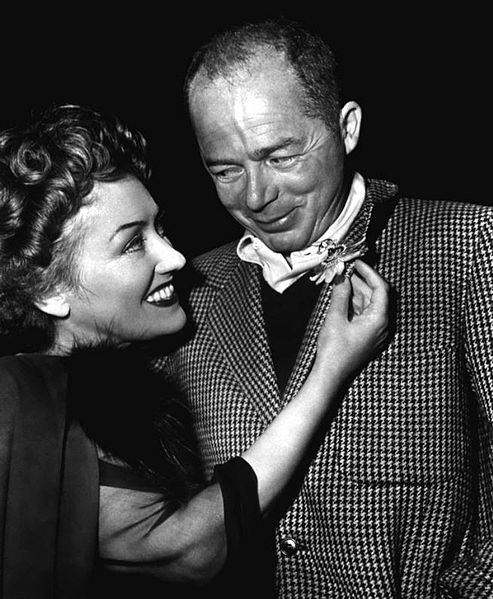
Studio publicity photo of Billy Wilder and Gloria Swanson, circa 1950. Public domain via Wikimedia Commons.
Described as: An artist. As John Wayne said “When he pointed that camera, he was painting with it.” Ford’s films were characterized by a strong artistic vision and frequently contained panoramas of magnificent outdoor settings that rendered the human actors almost insignificant.
Best known for: Stagecoach (1939), The Grapes of Wrath (1940), How Green Was My Valley (1941), The Searchers (1956)
Most underrated movie: They Were Expendable (1945)
You may be surprised to learn that: “Throughout his career Ford tended to work with the same group of people again and again, as actors, writers, stagehands, and cameramen. He was known for his non-ostentatious dress, and he frequently had both a drink and a cigar with him on the set. He wore a black patch over one eye, which had been injured in an accident during the 1940s.”
Oscar Nominations for Best Director: 5
Oscar Wins for Best Director: 4
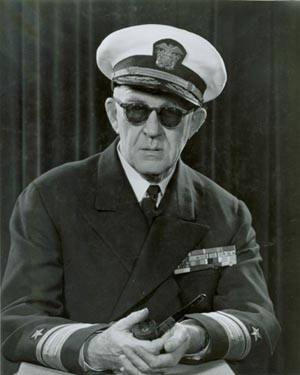
Director John Ford, who was also a Rear Admiral in the Navy Reserve, 1952. US Navy. Public domain via Wikimedia Commons.
Described as: “Hollywood’s most sought-after director of the 1930s.” He is cited as establishing the screwball comedy as a genre, though his subsequent films, focused on more serious social or historical issues, and revolved around a formula: “an honest and idealistic hero encounters problems from corrupt men and institutions but ultimately prevails.”
Best known for: It Happened One Night (1934), Mr. Smith Goes to Washington (1939), It’s a Wonderful Life (1947)
Most underrated movie: Meet John Doe (1941)—produced with an independent filmmaker, after a dispute with the Hollywood studios about directors having artistic control over their work
You may be surprised to learn that: The Christmas classic It’s a Wonderful Life was Capra’s personal favorite, although it was initially unpopular with both critics and the public.
Oscar Nominations for Best Director: 6
Oscar Wins for Best Director: 3

Frank Capra cuts Army film as a Signal Corps Reserve major during World War II, circa 1943. US Army. Public domain via Wikimedia Commons.
Described as: “Having a sympathetic approach to performance and an ability to create focused, dramatic moments.” He was praised for his careful handling of potentially incendiary themes and characters.
Best known for: Wuthering Heights (1939), The Best Years of Our Lives (1946), Roman Holiday (1953), Ben-Hur (1959) Funny Girl (1968)
Most underrated movie: The Children’s Hour (1961)
You may be surprised to learn that: With the United States in WWII in 1942, Wyler volunteered to make films for the armed forces. As an army major (later, lieutenant colonel), he produced two 16mm color films under combat conditions, serving as one of his own cinematographers (he ended the war permanently deaf in one ear as a result). The more notable of the two, Memphis Belle (1944), documented a B-17 bomber’s twenty-fifth and final mission over Germany
Oscar Nominations for Best Director: 12
Oscar Wins for Best Director: 3
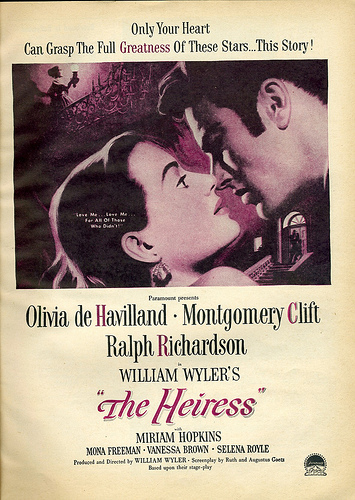
Movie poster for The Heiress (1949). CC BY 2.0 via Nesster Flickr.
Described as: “Idiosyncratic” and “iconoclastic”. His directorial style is known for its episodic storytelling, overlapping dialogue, and frequent improvisation.
Best known for: M*A*S*H (1970), Nashville (1975) and, more recently, The Player (1992)
Most underrated movie: Gosford Park (2001)
You may be surprised to learn that: The mellowness of A Prairie Home Companion may have reflected Altman’s recognition and final acceptance of mortality. Already suffering from cancer at the time of its release, he had been in precarious health since undergoing a heart transplant a decade earlier
Oscar Nominations for Best Director: 5
Oscar Wins for Best Director: 0 (But M*A*S*H was recognized for best screenplay)
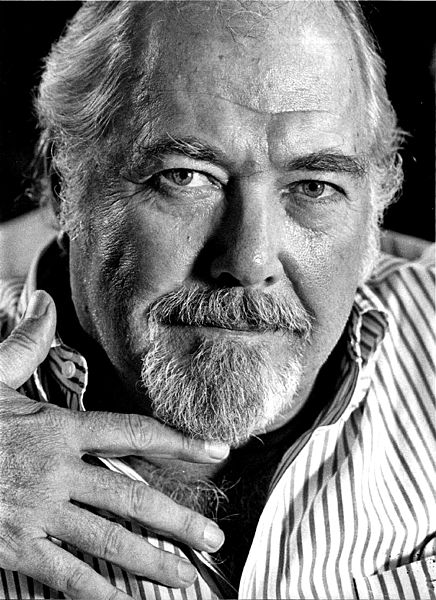
Publicity photo of Robert Altman, AP News, 1983. Public domain via Wikimedia Commons.
Discover the lives of more than 18,700 men and women – from all eras and walks of life – who have influenced American history and culture in the acclaimed American National Biography Online. To supplement the thousands of biographies, many of which feature an image or illustration, Oxford is proud to announce a partnership with the Smithsonian that makes nearly 100 portraits from the National Portrait Gallery available to ANB users.
Subscribe to the OUPblog via email or RSS.
Subscribe to only American history articles on the OUPblog via email or RSS.
The post Unknown facts about five great Hollywood directors appeared first on OUPblog.
The annual Academy Awards ceremony draws weeks of media attention, hours of live television coverage beginning with stars strolling down the red carpet, and around 40 million viewers nationwide on Oscar night. The Academy of Motion Picture Arts and Sciences relegates the awards for technical achievement to a separate ceremony a couple of weeks before, a sedate affair in a hotel ballroom rather the spectacular setting of the Dolby Theater. While this division between the arts and sciences is clear in awards season, that boundary has almost disappeared in the movies themselves, as computer-generated imagery and digital 3-D now occupy a prominent position in most major studio productions.

Academy Award for Toot, Whistle, Plunk and Boom at the Walt Disney Family Museum. Photo by Loren Javier. CC BY-ND 2.0 via Flickr.
For the first three hours of Sunday’s broadcast, Alfonso Cuarón’s Gravity seemed to be soaring toward a Best Picture Oscar, a victory that would have marked a new stage in this transformation of the American movie industry. A tour de force of technological innovation, Gravity won a total of seven Academy Awards, including the bellwether prizes for Best Editing and Best Director, and the voters appeared on the verge of bestowing their top honor on one of the first films to utilize the full potential of 3-D, a film that creates an almost visceral, stomach-dropping sensation of weightlessness as the camera and bodies appear to bob and drift through space. At other times the camera hurtles forward and the storyline rushes us from one space vehicle to another, propelled by an accidental explosion or the blast of a strategically deployed fire extinguisher. In those moments the weakness of Gravity is as unmistakable as its technical prowess: its virtuoso, gravity-defying feats are accompanied by an almost absurdly insubstantial and implausible plot, even by the standards of Hollywood, where happy endings have been arriving on cue for decades and most cars seem to have a magical sixth gear that allows them to fly over rising drawbridges. The narrative seems almost like an afterthought in Gravity, a pretext to link together one floating space platform and the next and to celebrate cinematic technology in itself, untethering it from earthly concerns like the plot.

Public Domain via Wikimedia Commons.
But the Academy voters obviously had a different narrative in mind when they submitted their ballots, and in keeping with a long tradition of last-minute plot twists, they managed to compose a far more heartening conclusion to the year in film. In your average year, the Academy Awards are, to borrow the title of one of this year’s Best Picture contenders, an “American hustle.” Every March, we anticipate the canonization of a new Citizen Kane or Vertigo, half-forgetting that these films, among the most revered American movies ever made, won a grand total of one Oscar (Herman Mankiewicz and Orson Welles, for the screenplay for Citizen Kane). Kane was nominated in nine categories and lost eight of them, and Hitchcock and the other makers of Vertigo left the Pantages Theater empty-handed in 1959.
The list of regrettable Academy Award decisions and omissions (for example, Hitchcock’s career-long snub in the Best Director category or the single statuette given to Stanley Kubrick in his lifetime, for visual effects in 2001) is at least as long as Oscar’s triumphs. While viewers tune in for the glitz, glamor, comedy, fashion, and, on occasion, a genuinely moving acceptance speech (or a train wreck taking place at the podium), the ceremony also promises to provide an annual assessment of the state of American cinema. The opulent spectacle arrives each year without fail, but the Academy almost habitually overlooks the truly vibrant pictures and artists working in the film industry in the United States. What does Oscar reward instead?
The recipients of the major awards are usually not the most lucrative blockbusters (which have already received their rewards at the box office) nor are they the type of formally innovative and idiosyncratic pictures that enter the canon retrospectively. The films that tend to be overrated by the Academy are well-meaning films that appear to address an important social issue, while discovering some heroes and reasons for hope in an otherwise trying situation (Slumdog Millionaire, Crash, and Million Dollar Baby, to name three of the last eight Best Picture winners). Films by recognized American auteurs like Martin Scorsese, the Coen brothers, or Kathryn Bigelow have also fared well (see, for example, The Departed in 2006, No Country for Old Men in the following year, and The Hurt Locker in 2009), as have historical films that depict a triumph over hardship, with the formula for contemporary cinema—adversity, heroism, survival, and even a measure of vindication—retooled for use in the past. (See The King’s Speech in 2010 for the most recent example, but note also the run of five consecutive awards beginning in 1993 for Schindler’s List, Forrest Gump, Braveheart, The English Patient, and Titanic, which together established the historical film as a one of the surest paths to the podium.) What matters at Oscar time is the appearance of importance and a willingness to return to historical tragedies or to glance at contemporary social ills.
Viewed in retrospect, the Academy Awards perform something of a bait and switch, as instead of recognizing the best films created in the previous year they provide a barometer of the social and historical problems that continue to haunt us, including (to focus on this year’s nominees) political corruption, the excesses of Wall Street, uneven development, slavery and racism, the AIDS crisis, and the persistence of homophobia. This year’s Best Picture nominees have been justly scrutinized precisely because they seem so intimately linked with the problems they address. Four of the nine nominees are based on actual events drawn from the very recent past, another (Philomena) recounts a true story spanning a 50-year period from the middle of the twentieth century to the present, and 12 Years a Slave retells the autobiography of Solomon Northup, a free African-American from New York who was kidnapped and sold into bondage in Louisiana. Add Gravity to this strong group of films, and oddsmakers were predicting the tightest contest in recent memory, with these many returns to history pitted against an immersive, high-tech cinematic experience of the future.
In The Wolf of Wall Street, Jordan Belfort, a real-life financial scam artist played by Leonardo DiCaprio, finds himself unable to drive home after an overdose of Quaaludes that leaves him prostrate on the front steps of his country club. Summoning all his strength, he manages to slither across the driveway, hoist himself into his gull-winged sports car, and steer through a series of obstacles unscathed. Or at least that’s how the events unfold the first time, in what appears to be Jordan’s experience of reality. Immediately after that sequence, we see the police arrive and Scorsese presents us with a revisionist version, with a wreckage of cars and signposts left flattened in his wake. Hollywood’s approach to the past often resembles the first, more delusional of these scenes, with the heroic figure emerging triumphant from history.
In 12 Years a Slave the historical devastation caused by slavery is more frightening because the damage is all pervasive, because nothing is left uncorrupted by the system that frames every interaction through the lens of property. Screenwriter John Ridley and director McQueen had the courage to let Solomon Northup’s story remain largely unchanged from the original autobiography and to frame the most searing images in the simplest, most direct way, as in the agonizingly long take where a near lynching unfolds almost in slow motion. And in the best tradition of classical Hollywood cinema, McQueen manages to combine a compelling narrative with a series of subtle character portraits, as Northup travels through a looking glass from his prior existence as an accomplished musician and family man in New York to what seems like an alternative universe, where survival depends on the stripping away of those markers of identity and humanity. Rather than present slavery as an incomprehensible evil from another time, the film also chronicles the everyday rationalizations that allow the master to accept depravity as a way of life and the foundation of an economic order.
In most years the Oscars ceremony performs a bait and switch, as we await the announcement of the year’s best films and hear the name of a soon-to-be-forgotten film. But the Academy Awards also remind us why we continue to care about movies and ascribe to them a social significance and power all out of proportion with the relatively modest ambitions of even the Best Picture nominees, let alone the more standard studio fare. The Oscars are an advertisement for the potential of cinema to engage with traumatic historical and contemporary realities, even if we usually have to look elsewhere for the films that address those issues in all of their complexity. 12 Years a Slave, one of the few masterpieces also to win the award for Best Picture, reminds us that sometimes those films can come straight from Hollywood.
James Tweedie is Associate Professor of Comparative Literature and a member of the Cinema Studies faculty at the University of Washington. He is the author of The Age of New Waves: Art Cinema and the Staging of Globalization.
Subscribe to the OUPblog via email or RSS.
Subscribe to only television and film articles on the OUPblog via email or RSS.
The post Steve McQueen’s low-tech triumph: Looking at this year’s Oscar winners appeared first on OUPblog.
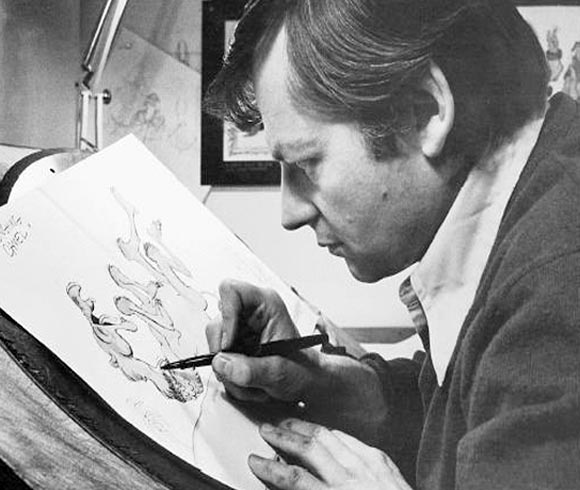
The legendary Richard Williams, eighty years young, will appear in Los Angeles on Friday, October 4th, to celebrate the opening of a new exhibition devoted to his career, as well as take part in the Academy of Motion Picture Arts & Science’s annual Marc Davis Celebration of Animation. The lecture, entitled This Amazing Medium with Richard Williams, sounds like an event worth attending, even if not for the amazing bit casually tossed in at the end of the program description:
Williams will discuss the work that has inspired him and the people who have influenced him. Some of Williams’s favorite clips will be shown to illustrate the artistic and emotional range of this amazing medium, from the charm of Snow White and the Seven Dwarfs and the imagination of Fantasia to the stylized sophistication of Rooty Toot Toot and the subtlety of expression in Toy Story.
Williams will also enlighten audiences about his own work through clips from The Little Island, The Charge of the Light Brigade, A Christmas Carol, The Return of the Pink Panther, Who Framed Roger Rabbit, Circus Drawings and the first theatrical trailer for The Thief and the Cobbler, as well as a preview of his work-in-progress, Prologue.
That’s right, audiences will finally get a glimpse of the secretive film project that Richard has been working on for years. In an interview earlier this year, Williams revealed that he had nearly finished a six-minute prologue to the untitled film project “so if I do drop dead we will still have something.”
Tickets to the lecture will go on sale September 3, and are $5 (general admission)/$3 (students and Academy members). The lecture begins at 7:30pm at the Samuel Goldwyn Theater (8949 Wilshire Blvd, Beverly Hills, CA 90211).
As mentioned above, the Academy will also open a new gallery exhibition on the same night called “Richard Williams: Master of Animation”. The description sounds swell:
Add a CommentTake an exciting visual tour through Richard Williams’s career and experience his master class approach to the art of animation through this dynamic exhibition. Twelve unique zones, accompanied by matching chapters from Richard Williams’s new iPad App, show aspiring animators and pros alike how to direct animation and how Williams approaches character movement, dialogue, animal action and more. On view through December 22, 2013, Tuesday through Friday, 10 a.m. to 5 p.m. and weekends noon to 6 p.m.